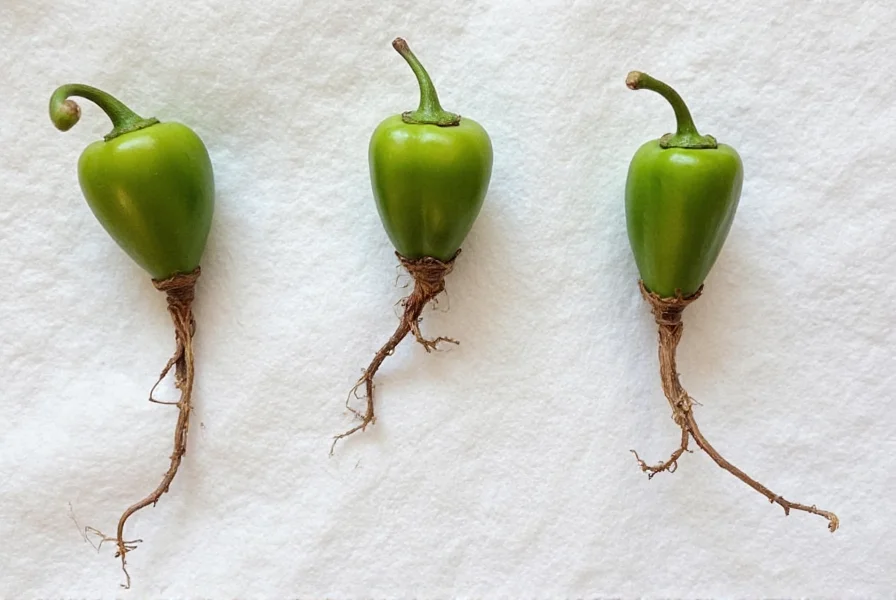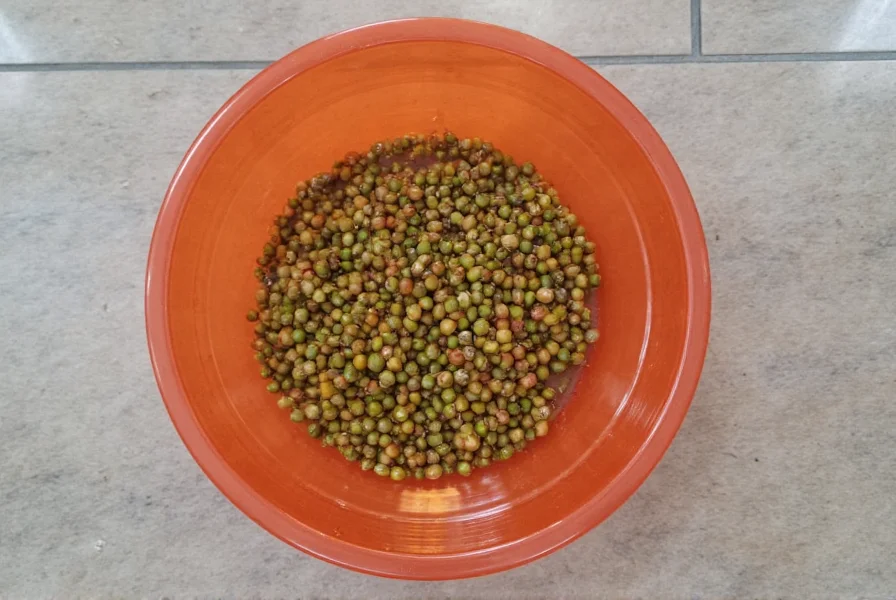Germinating pepper seeds successfully requires attention to specific conditions that many gardeners overlook. Unlike some vegetables, peppers are tropical plants that demand consistent warmth to sprout reliably. Understanding these requirements can mean the difference between robust seedlings and frustrating failures in your spring garden planning.
Why Pepper Seeds Need Special Germination Conditions
Peppers originate from tropical climates, making them particularly sensitive to temperature fluctuations during germination. Their seeds contain natural inhibitors that prevent sprouting in suboptimal conditions—a survival mechanism that protects them from germinating during cool, damp spring weather that could kill young plants. This biological trait means standard seed starting methods often fail with peppers unless you provide the right environment.
Step-by-Step Guide to Germinating Pepper Seeds
1. Seed Selection and Preparation
Start with fresh, high-quality seeds. Pepper seeds remain viable for 2-3 years when stored properly, but germination rates decline significantly after the first year. For older seeds, consider a simple viability test: place 10 seeds on a damp paper towel, roll it up, and keep in a warm place for a week. The percentage that sprouts indicates your expected germination rate.
2. Optimal Temperature Requirements
Temperature is the most critical factor in how to germinate pepper seeds successfully. While many vegetables sprout well at 65-70°F, peppers require 75-85°F for optimal germination. Below 70°F, germination slows dramatically; below 60°F, most pepper seeds won't sprout at all. A seedling heat mat set to 80°F provides the consistent bottom warmth that dramatically improves pepper seed starting success rates.
| Pepper Type | Optimal Germination Temp | Average Germination Time |
|---|---|---|
| Bell Peppers | 75-80°F (24-27°C) | 7-10 days |
| Hot Peppers (Jalapeño, Serrano) | 80-85°F (27-29°C) | 10-14 days |
| Super Hots (Ghost, Carolina Reaper) | 85°F+ (29°C+) | 14-21 days |
3. Moisture Management
Maintain consistent moisture without saturation. Overwatering is the leading cause of troubleshooting pepper seed germination problems. Use a spray bottle to mist the soil surface rather than pouring water, which can displace seeds. Covering containers with a humidity dome or plastic wrap helps maintain moisture levels until sprouts appear. Remove the cover immediately after seeds sprout to prevent damping off disease.

4. Container and Soil Selection
Use sterile seed starting mix rather than garden soil or regular potting mix, which may contain pathogens or be too dense. Small cell trays (2-3 inches wide) work well, but avoid tiny cells as pepper roots develop quickly. For gardeners wondering how long does it take for pepper seeds to sprout under different conditions, the soil medium significantly impacts results—light, airy mixes promote faster root development than heavy soils.
5. Planting Depth and Technique
Plant pepper seeds 1/4 inch deep. Deeper planting can prevent sprouting, especially in cooler conditions. Gently press soil over seeds without compacting—pepper seeds need oxygen as much as moisture. For difficult varieties, some gardeners use the paper towel method: place seeds between damp paper towels in a sealed container kept at optimal temperature until sprouted, then carefully transplant to soil.
6. Light Requirements After Sprouting
While pepper seeds don't require light to germinate, seedlings need 12-16 hours of bright light immediately after emerging. A south-facing window often provides insufficient light, causing leggy, weak plants. Consider using LED grow lights positioned 2-4 inches above seedlings, raising them as plants grow. This addresses a common question about the pepper seed starting timeline—adequate light prevents stretching and promotes stocky, healthy transplants.
Troubleshooting Common Germination Problems
Seeds Not Sprouting
If your pepper seeds aren't germinating after 14 days, check these factors:
- Temperature too low (most common issue)
- Soil too dry or too wet
- Old or poor-quality seeds
- Planting too deep
Damping Off Disease
This fungal disease causes seedlings to collapse at the soil line. Prevent it by:
- Using sterile seed starting mix
- Avoiding overwatering
- Providing good air circulation
- Removing humidity covers immediately after sprouting
Advanced Techniques for Challenging Varieties
For super-hot peppers or older seeds, consider these methods to speed up pepper seed germination:
- Pre-sprouting on paper towels: Monitor germination closely and transplant as soon as roots emerge
- Bottom watering: Fill trays from below to avoid disturbing seeds and maintain consistent moisture
- Temperature cycling: Some gardeners alternate between 85°F during day and 75°F at night to mimic natural conditions

When to Transplant Pepper Seedlings
Transplant when seedlings have developed their first set of true leaves (the second set of leaves after the initial seed leaves). Use pots at least 3-4 inches in diameter to accommodate pepper's taproot system. Continue providing consistent warmth—peppers grow slowly in cool conditions. Many gardeners keep seedlings on heat mats until nighttime temperatures consistently stay above 50°F outdoors.
FAQ
How long does it take for pepper seeds to sprout under ideal conditions?
Most standard pepper varieties sprout within 7-10 days when kept at 75-80°F. Hotter varieties like jalapeños typically take 10-14 days, while super-hots such as ghost peppers may require 14-21 days even under optimal conditions of 85°F+.
What's the ideal temperature for germinating pepper seeds?
The ideal temperature range for germinating pepper seeds is 75-85°F (24-29°C). Bell peppers germinate best around 75-80°F, while hotter varieties require the upper end of this range. Temperatures below 70°F significantly slow germination, and below 60°F most pepper seeds won't sprout at all.
Should I soak pepper seeds before planting?
Soaking pepper seeds in room-temperature water for 24 hours before planting can improve germination rates, especially for older seeds or difficult varieties. This softens the seed coat and may reduce germination time by several days. Don't soak longer than 24 hours, as this can damage the seed embryo.
Why are my pepper seeds not germinating?
The most common reasons for pepper seeds not germinating are insufficient warmth (below 70°F), improper moisture levels (too dry or too wet), planting too deep, or using old seeds. Pepper seeds require consistent temperatures of 75-85°F for reliable germination—a seedling heat mat often makes the critical difference for successful pepper seed starting.
Can I start pepper seeds directly outdoors?
Starting pepper seeds directly outdoors is generally not recommended in most climates because soil temperatures need to remain consistently above 70°F for germination, which typically occurs several weeks after the last frost date. Most gardeners achieve better results by starting seeds indoors 8-10 weeks before transplanting outdoors, using a heat mat to maintain proper pepper seed germination temperature.











 浙公网安备
33010002000092号
浙公网安备
33010002000092号 浙B2-20120091-4
浙B2-20120091-4